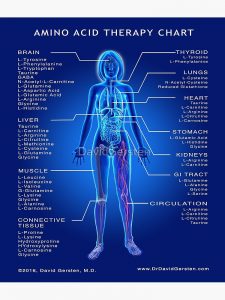In recent decades, the rate of autism has gone up, but researchers don’t fully understand why. They have, however, made strides in their understanding of the disorder and in how to treat it. Read on to learn more about autism and the support services available for children with the disorder and their families.
Autism is not a single condition
The fact is, autism spectrum disorder (ASD) is a group of developmental disorders. It includes a wide range of symptoms, skills, and levels of functioning. Some children and adults with ASD can perform the activities that are part of daily living, while others need support to perform even basic tasks.
Symptoms of ASD in children and adults include:
- Repetitive behaviors, such as flapping their arms, rocking from side to side, or twirling.
- Struggling with social interactions and communication. This includes not responding to their name, avoiding eye contact, being upset by even slight changes in routine, and delayed or awkward speech.
- Sensory issues, such as being very sensitive to light, noise, clothing, or temperature.
In addition to the symptoms listed above, the National Institutes of Health website contains a list of “red flag” symptoms of ASD. Some of those red flags include:
- Communication issues such as not pointing or waving “bye-bye” or being unable to explain what he or she wants.
- Social behavior issues such as not smiling when smiled at or tuning people out.
- Stereotyped behavior such as doing the same thing over and over or repeating words and phrases.
- Other behaviors such as not knowing how to play with toys or having violent temper tantrums.
There are risk factors for ASD
ASD can affect children of every race and nationality. However, there are factors that increase a child’s risk of developing it. These include:
- Gender. Boys are 4 times more likely than girls to develop ASD.
- Family history. Families with a child with ASD have a greater risk of having another child who develops it.
- Other disorders. Having certain medical conditions increases the risk of a child developing ASD. These disorders include Tourette syndrome, fragile X syndrome, and tuberous sclerosis.
- Extremely pre-term babies. Babies born before 26 weeks of pregnancy may have a greater risk for ASD.
- Parents’ ages. More research is needed in this area, but there may be a connection between a child being born to older parents and ASD.
Almost half of children and adults with ASD have average to above-average intelligence. They are able to learn things in detail and remember information for long periods of time and excel in math, science, music, or art.
There is no cure, but ASD can be treated
While it’s true that there is no one standard treatment for ASD and the disease is not reversible, early treatment and proper care can help children with ASD overcome some of the difficulties they face, maximize their strengths, and learn new skills. Management opportunities include:
- Working with therapists to develop a detailed plan to help children develop social and language skills.
- Medicines that can help control symptoms such as aggression, repetitive behavior, and attention problems.
Children are never too young or too old to receive support services
Early intervention (before the age of 3) is one of the best ways to help a child with ASD reach his or her full potential. However, children aged 3 to 21 can also benefit from receiving support services.
For children under the age of 3, services are available through the state’s department of health. If the state determines that there is a need for testing, they will do the tests at no cost to you. If a child qualifies, he or she is entitled to a publicly funded service coordinator. This coordinator will develop an individualized plan that meets the needs of the child and his or her family.
For a child 3 to 21 years of age, the state will do an evaluation to learn if he or she is eligible for special education services. For all eligible children, the state is required to put an Individualized Education Program team in place to develop an individualized educational plan for each child.
To learn more about the services that are available to children with autism and their families, go to http://autismsciencefoundation.org/what-is-autism/following-a-diagnosis/.
It’s important to care for the caregiver, too
It can be challenging to raise a child with ASD. Here are some suggestions that may help caregivers cope:
- Build a team of trusted professionals. In addition to doctors, the team may include social workers, teachers, and therapists.
- Take time to enjoy favorite activities and schedule one-on-one time with other children (if any) in the family.
- Connect with other families who are in a similar situation. It can be helpful to share advice and learnings.
- Learn as much as possible about ASD and its treatments.
- Keep records of visits with members of the child’s team. This can help you make treatment decisions.
Steps you can take today
If you think your child has symptoms of ASD:
- Talk with your pediatrician about what you’ve observed and about ASD screening.
- Keep thorough notes during your conversations and meetings with healthcare providers and teachers. This information can be helpful as you decide on next steps.
- Keep copies of doctors’ reports and evaluations. This information can help determine if your child qualifies for special programs.
If your child has been diagnosed with ASD:
- Contact your local health department, school, or autism advocacy groups to learn about ASD programs that may be available.
- Talk with a pediatrician or school official to help you find a local autism expert. This expert can help develop a treatment plan.
- Join an ASD support group. Sharing information and experiences can help older children or adults with ASD or you learn about treatment options and reduce stress.
 Global Pharm Distribution, LLC
Global Pharm Distribution, LLC






